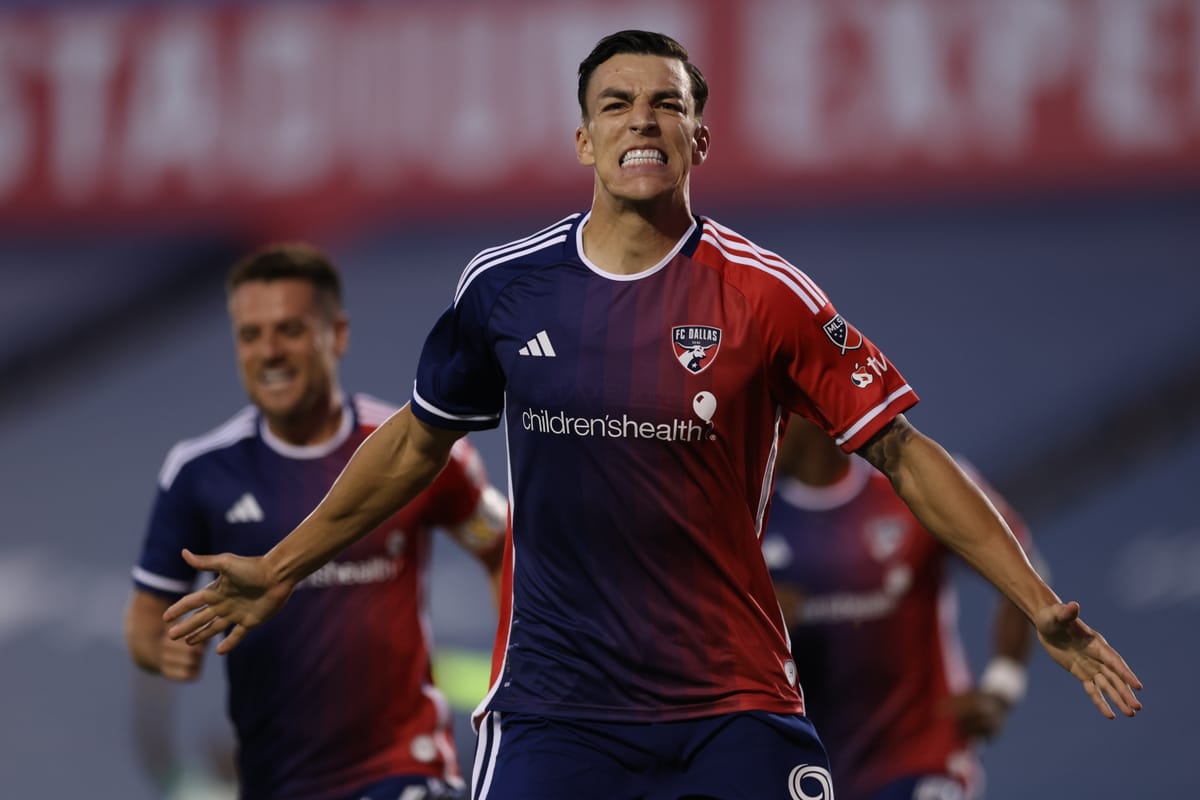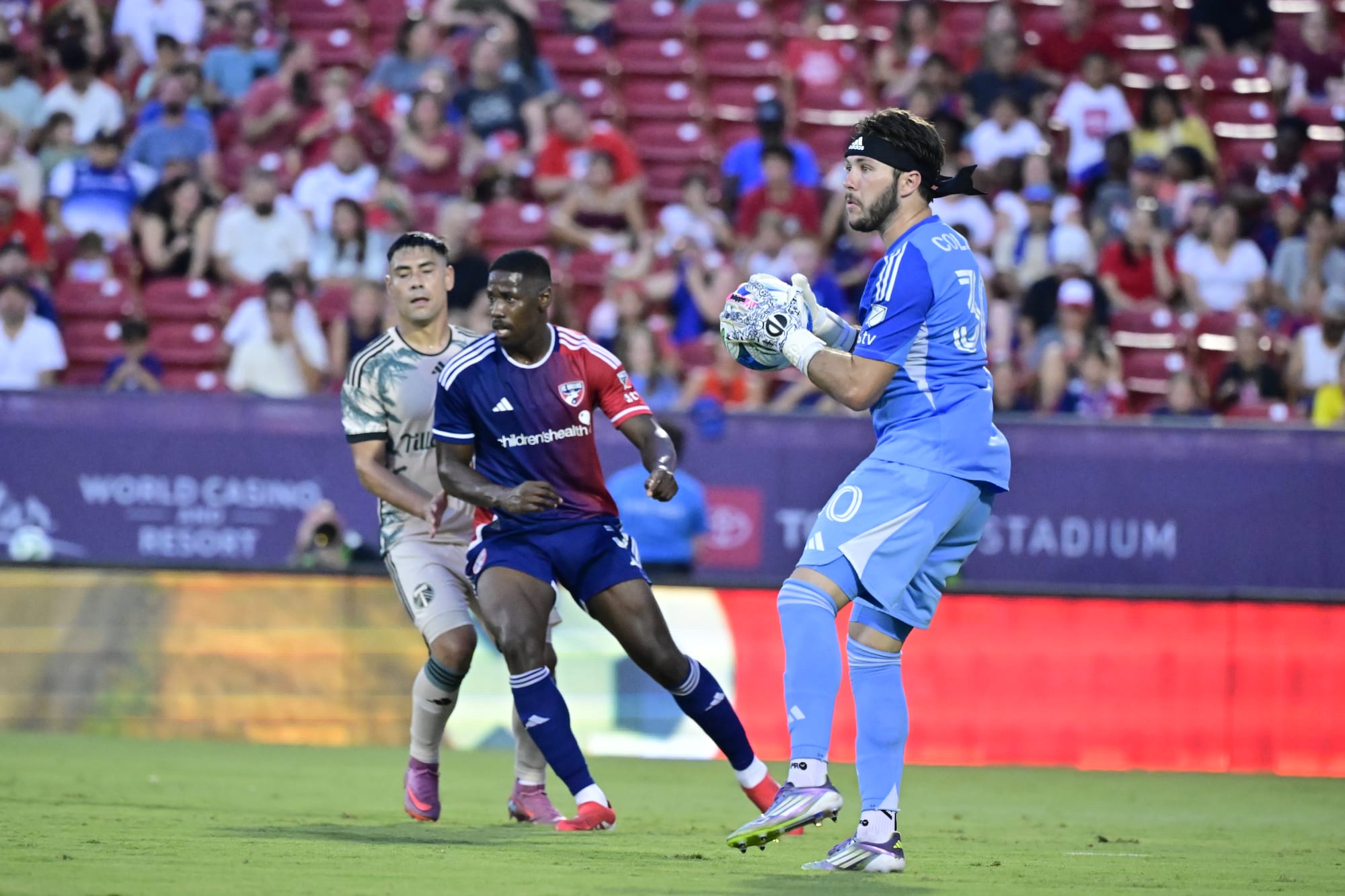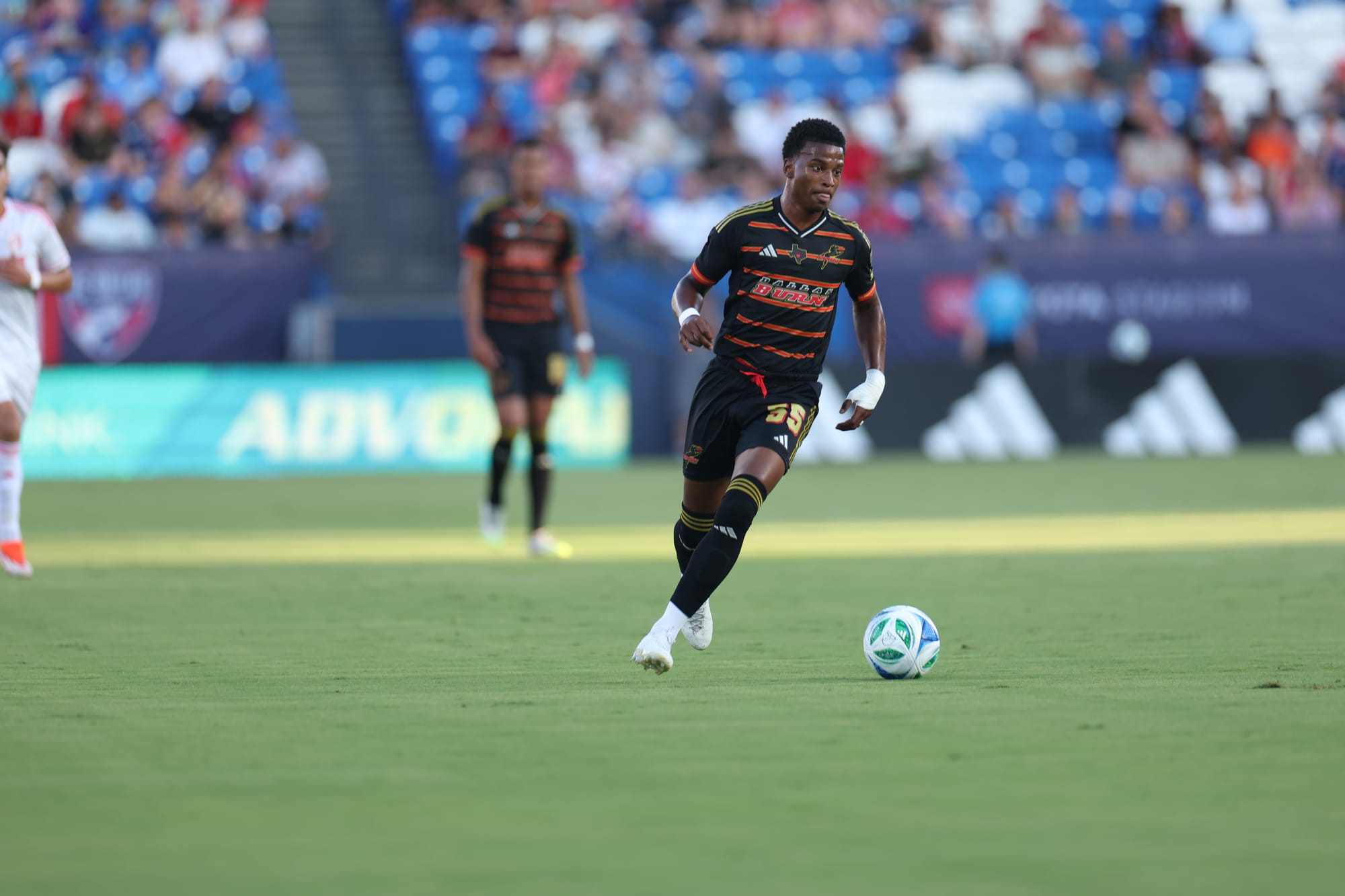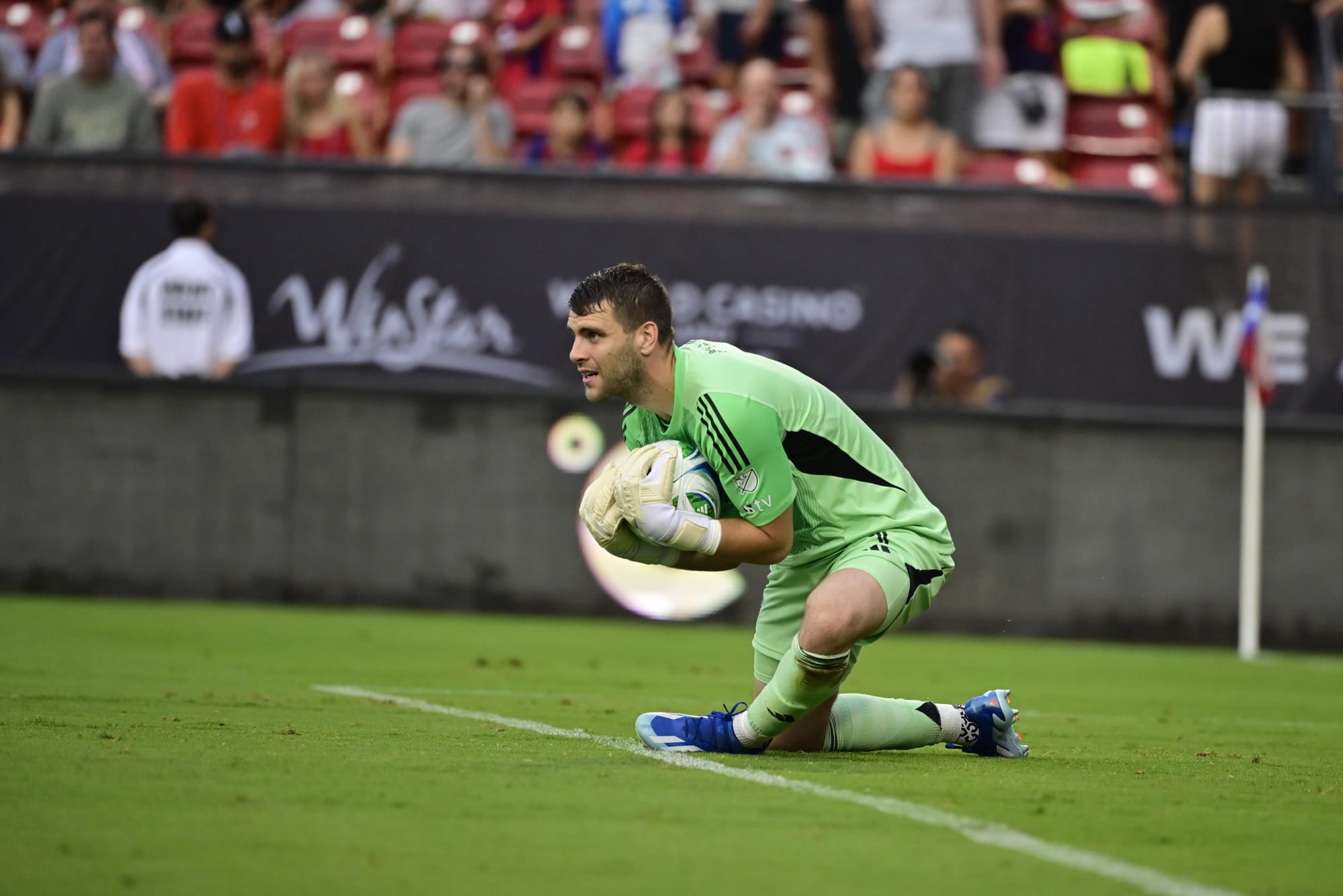Should FC Dallas keep the 5-2-3?

Coming into 2025 under new manager Eric Quill, FC Dallas' expected formation was 4-2-3-1. It's how Quill organized his teams in previous stops, and Lucho Acosta's arrival seemed to solidify that.
Cue the old "best laid plans" axiom. Instead Dallas has used multiple different lineups and personnel combinations. With five games left in the season however, Dallas has found success in an unexpected place: the 5-2-3.
Per FBRef, Dallas has used this formation (they call it a 3-4-3) since July 16th against the Earthquakes. In that span they've picked up 13 points while losing just once. If you start tracking post NYCFC loss, which coincides with Bernie Kamungo's debut at left wing back and Acosta's departure, the team is undefeated with nine points.
This past Saturday's victory against Austin was a banner display for the club's newfound formation. The offense scored two goals (that could have been three) while the defense limited Austin to just three shots on target. The performance and resulting outcome was desperately needed, as Dallas chases down a postseason spot.
Dallas' recent run of success poses a question: should they keep this formation long term? Let's look at how Dallas is succeeding in the 5-2-3, what does this mean for the roster, and the verdict with all that said.
What's Working With The 5-2-3
Going back to that Austin victory for an example of how this formation succeeds, here's the passing chart from Saturday via the great MLS Analytics account on Bluesky:

Dallas' passing map is an almost picture perfect example of this formation's ideal outcome. The wing backs are aggressive, specifically Kamungo on the left, with the center backs holding serve in that first line. Two midfielders dominate the center, all while the forwards receive service from multiple directions.
What's great about this 5-2-3 is how versatile it is. When necessary, Dallas can drop the wing backs into a back line of five. In extreme circumstances, two midfielders can retreat creating a second line of four in front of that. Suddenly the ultra-attacking formation becomes a defense fortress, clogging up passing lanes and limiting shooting options.
That flexibility appeals to Quill, who has preached tactical flexibility this entire season as a core ethos of his view of the game. If anything, circumstance has forced him into a scenario he probably wouldn't have explored otherwise.
While the trademarks of a successful 5-2-3 are evident in this Dallas run (flexibility, aggressive wing backs, industrious midfielders, and powerful forwards), there's a couple of tweaks that make it Burn bespoke.
Shaq Moore, center back
Shifting into this formation meant Moore would be important, but it was expected that'd be as a wing back. Instead Moore's productivity has come as one of the three center backs.
At first it seems obtuse, but in practice makes sense. Moore's agility and pace become valuable defensive tools behind whichever wing back he's helping. It lets that wing back release forward, knowing he's got cover behind him. It also gives Dallas a more attacking presence at center back. Moore getting forward creates a numbers advantages, while the two remaining center backs hold the line.
In a way Dallas is playing with three wing backs, just in an unorthodox way. Between Ramiro deputizing as a wing back and Kamungo growing into the position, Moore's presence has enabled success for both. When Moore plays on the right, he pairs his physical gifts with Ramiro's positioning creating a perfect combination. On the left, Kamungo earns creative license to attack more as he did against the Verde.
Another CB in goal

Part of what allows Dallas to play with someone like Moore at center back is the role of the goalkeeper in this system. More and more keepers are being asked to step up, make big passes, and essentially fill a spot in the primary defensive line. Thiago Motta made it famous during his tenure at Bologna, and Quill brought up the concept when Michael Collodi was initially called into duty.
The big asset of this phantom center back is their passing ability, something at which Collodi and Jacob Jackson have thrived. In the win against Austin, Jackson's passing led to both Dallas goals. Both backup keepers have also been aggressive in coming for balls, unafraid to hurtle themselves into chaos for a save. That takes some stress off defenders who don't have to wonder if they need to make a decision, allowing them to do their jobs better.
I'd be remiss if I didn't take a beat here to recognize longtime FC Dallas goalkeeping coach Drew Keeshan. He's in his 18th season with the club, and it's easy to see why he's lasted across several administrations. Dallas has consistently been a keeper factory and this season alone Keeshan's work has enabled three different players to succeed when called upon. Those players deserve oodles of credit, but the secret weapon sits on the bench.
Moose and the Big Dog
If a picture is worth a thousand words, then this video of Musa's goal from Saturday might be a whole Elizabethan novel:
The duo of Musa and Logan Farrington up top has turned into one of the best strike duos in the league. You could argue any system would work with talented players like them, but this one especially does.
Musa's ability to do it all unlocks the offense. He's got clinical finishing, can hold the ball up, play it onto his teammates, and isn't afraid to break off a killer assist of his own. That enables players like Farrington, who's adept at drawing fouls that infuriate opponents while generating free kicks, to do their thing while cleaning up goals Musa doesn't score.
Not unlike Moore at center back it's a pairing on paper that shouldn't work, but on grass works perfectly.
Industry in the engine room

With Ramiro moving to right wing back, that's allowed Christian Cappis and Kaick to form a dominant midfield pairing. Quill has said putting Ramiro out wide is an effort to get his best players on the pitch, and it seems to be working.
Cappis and Kaick share similar qualities: they both have legs for days, they're brave, embodying the warrior spirit that Quill wants from his players. How they display said qualities is different. Cappis is a calm, possession generating player. He snaps off long passes with ease, dispossesses opponents while protecting the ball, and with his size he's got a distinct advantage in defensive battles.
Meanhwile Kaick lives up to his "Pitbull" moniker. A whirling dervish of a player who loves to slide tackle, run up to overload the offensive side of the pitch while enforcing on the defensive side. He's still refining his play but the energy and engine is unmatched. Learning from both Ramiro and Cappis will make Kaick a great player long term.
Together they form a midfield that opposing teams hate playing against for many reasons. Their energy and industry last for 90 minutes, frustrating opponents at every turn. With them on the pitch, the middle third turns into the soccer equivalent of trench warfare. This season started with Dallas having issues in both midfield personnel and strategy, to now having two inked in starters with a bona fide style.
Roster questions going forward
Too many goalkeepers?

One could argue there's no such thing. Having quality shot stoppers at every position on your depth chart is a good thing, as shown with Dallas having three this season.
That said with Collodi and Jackson's success, questions might pop up around established #1 Maarten Paes. This isn't an indictment on Paes' abilities at all, he's a great keeper. The question becomes: is he the right fit for this particular formation?
What's holding Paes back is his distribution. His feet have gotten better, but they're not as good as either of his deputies. His shot stopping ability is superior, but the margins might not be as lopsided as once thought. If the coaching staff agrees, that could create a roster jam.
Paes' contract expires in 2026 with two option years. He's in his prime years without needing an international spot. If Dallas thinks they need to make a move, this winter could be the moment. Any number of MLS teams could upgrade their keeper situation with Paes, and he'd command a strong return.
This is not an endorsement of moving on from Paes. It's merely something that feels worth thinking about. There was a time where trading Jesus Ferreira seemed impossible; we saw how that turned out. In MLS nothing is off the table, no matter how farfetched it sounds on paper.
Defender depth chart
Going to a five person back line changes the math on how many/what kind of defenders you need. If Dallas wants to pursue this formation long term, they've got some issues to handle.
While Kamungo, Moore, and Osaze Urhoghide have all become iron clad starters what's around them is fluid. Sebastien Ibeagha is a free agent after this season, Lalas Abubakar and Ramiro the season after. In addition, relying on Ramiro long term at right wing back feels like a spare tire: it'll work for a short time but a replacement is advised. That could be Moore, but it creates another hole.
Regardless of the how Dallas is going to need at least two center backs and a right wing back this off-season. Even if Enzo Newman, Herbert Endeley, and/or Geovane Jesus all get healthy finding a bona fide starter out wide right will be necessary. Another priority is finding Urhoghide a partner up to his quality. That could be a TAM(Targeted Allocation Money) or even a DP(Designated Player) center back. No matter the mechanics, improving the defensive depth chart is super necessary.
Finding another top forward
As noted above Musa and Farrington are one of MLS' best partnerships, but they need a third. Not because they're lacking but to raise their lethality to that of a MLS Cup contender.
What that particular player looks like is subjective. The most natural fit would be a wide player to play on Farrington's opposite side. Big Dog on one wing, new forward on the other, and Moose in the middle. That's a winning combination should they get the right third member.
If they wanted to play Musa and Farrington more centrally, they could enter the #10 market once again. That didn't work with Acosta but that's less about position and more about the specific player. Finding someone who could connect the midfield to the forwards, unpick low block defenses, and even run ahead of the strikers at time could create a whole new dynamic.
Regardless of specifics, another DP attacker is what Dallas needs to prioritize this winter. It'll solve a lot of Dallas' problems while propelling them towards their intended destination: a title contender.
The verdict
In this blogger's opinion, Dallas should continue with this formation and play style going into 2026. Yes there are roster problems to solve, but no matter what Dallas does this off-season they have those problems present. For the first time in months the Toros on offense and defense a coherent identity that's producing results. It's a foundation upon which playoff victories and even more can be built.
